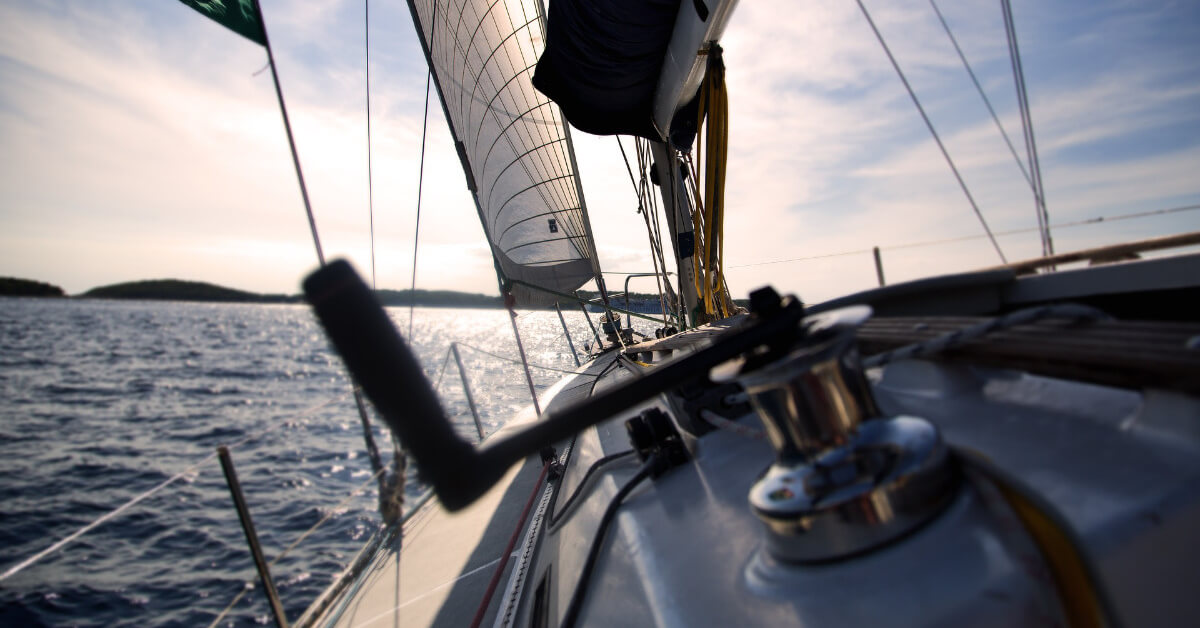Waiting: The assassin of the user experience

The famous mathematician Blaise Pascal said that “all of humanity’s problems stem from man’s inability to sit quietly in a room alone.” In an age when our attention is divided between screens and devices, and we no longer know what boredom is, the problem of waiting has never been as obvious and painful. Many companies forget that time represents a vital dimension of user experience. I’m firmly convinced that it is “different” experiences that form the basis of developing customer loyalty. That is, if a company offers something different or performs something differently from its competitors, the decision to opt for its products or services can be easier (not for everyone, of course), and maybe also underpinned by emotions because of this. Unfortunately, a critical and meaningful intervention in this uniqueness is not always such a simple step, because opportunities for it typically open only when we doubt that something we’ve been doing since time immemorial is still the best choice today. Doubt is thus the first step on the road to change.
Let me explain with my own recent experience from this year’s timely-concluded vacation in Croatia how service companies can build on their uniqueness (by respecting time). Taking into account the guidelines for isolating and maximum social distancing, we decided to spread our sails. But even before we got close to the pier, due to the now already standard complications I found myself wanting to use the rope for something other than tensioning the sail.
Only those that have contact with their customers can influence their experiences.
Anyone who’s ever chartered a sailboat has probably noticed that over the years this industry has gone in pretty much the same direction as auto rentals; the experience hasn’t improved much despite the growth in number of providers. The whole value chain consists of four key stakeholders: the owner of the sailboat fleet, the fleet operator, the marina, and the agency (or rental agent). The sailboat or fleet owner really doesn’t know the customer and has no contact with him. Ordinarily the owners are just financial associations that often never even see their fleet, except on paper. So far, the specific marina has never been a selection criterion for me, because in the end it’s just a place where your car sits parked for a week or two. All the services associated with the fleet and the customers are handled by the operators, or “charter bases.” The charter base employees, therefore, are practically the only ones that can actively shape the customer experience. Nobody has any influence over the weather or potential equipment failures.
“If I were the customer myself, would I want to be treated this way?” is the key question that anyone working in the service industry needs to regularly ask himself.
The main portion of contact, or charter base service, experienced by the charterers is concentrated at the start and end of the charter period: when picking up and returning the boat. Just the first part is worse than a colonoscopy, because here the customers can already feel that the providers have real disdain for the first rule of waiting: people want to get started! That’s why they give you a menu right away at a restaurant, so you get the feeling that something’s happening. In the high season, boat charters are always by the week. Generally, people pick up the boats on Saturday afternoons and return them on Saturday mornings. Saturday is therefore the most stressful day for everyone involved, which is quite far from what it should be. This, of course, is covered by the second rule of waiting: impatience and nervousness give the impression that the waiting is longer than it actually is.
Picking up the boat is even more mentally exhausting, because—unless you did your best imitation of a mummy in the passenger seat most of the day—this isn’t the first thing that’s happened all day. Driving, waiting at the border, and a car crammed with people in various states and moods are a pretty reliable recipe for tension. The happy arrival at the marina, which should symbolize a relaxed beginning to a vacation, is really more reminiscent of a cork ballistically popping out of the bottle neck where it has long been forcibly resisting the pressure. Then comes the visit to the reception area, where you “sort out” the paperwork—without clear guidelines regarding what this process entails and how much time it’ll take. The reception phase thus illuminates the misunderstanding of the third and fourth rules of waiting in one fell swoop: that is, waiting that has not been described in advance or given a particular duration seems longer, and that unexplained waiting also seems much longer than it would otherwise to the human mind.
A micro-view of all these points of waiting reads like a recipe for assassinating the user experience: first you wait because all the wind-hungry vacationers arrive at the place at the same time, then a promising captain (whoever agreed to quench his thirst with water alone and operate a chartered boat) waits at the reception desk, while the rest of the crew has already landed at a nearby cafe—where, of course, they must again wait for a drink to appear on the table. But even if “liquid refreshment” is an effective remedy for parents, children usually do not show much enthusiasm for waiting around in cafes. Unlike beer, ice cream melts, which is usually followed by a new round of grumbling, which had otherwise already been the main theme of the Ljubljana to Zadar car trip.
Successfully sorting out the paperwork signals the next step: taking over the boat from the operator. But this groundbreaking step doesn’t happen without an extra dose of waiting. Almost as a rule, this waiting mini-marathon again violates the third rule: you have no idea whether you will live to see noon, a dead battery on your cell phone, or retirement. Any request whatsoever usually spawns merely the clever observation that the marina was hit by an unexpected, unsuspected, and completely unforeseen crowd. The crew—now somewhat fortified—is fighting a parallel battle. In a kind of sadistic episode of “Games without Borders,” they search the marina for a cart to transport luggage from the car to the boat. The number of carts is, of course, inversely proportional to the number of guests. But this doesn’t bother anyone, because the unforeseen crowd occurs only on Saturdays. The carts would create an unnecessary burden on all the other days of the week.
Taking over the boat is usually followed by two days of violent psychological decompression, and this year it dragged on until the third day. Which means the calm, Malvasia-lubricated phase of windy enjoyment didn’t actually take effect until Monday night. But even when I thought the worst was behind us, after a few days of enjoyment the final part of the process began, which is at least as painful, if not more so, than the initial one: returning the boat. Unfortunately, this activity is still organized in such a way that almost all the crews return to their home ports at around the same time, and all the crews are in a hurry to leave the marina as soon as possible and start their long journeys home. Of course, returning the boat to the charter base doesn’t always go as smoothly as you’d like for the end of your vacation. Here, the fifth rule creeps into the experience: waiting that isn’t occupied by something to do seems longer. Mostly, the people on a sailboat (other than the skipper) have nothing to do. In the heat of a high summer, members of the crew can quickly become restless—something that has never contributed to improving the experience. Basically, you’re faced with an opposite version of the takeover: now comes the rebus with the carts, then the unexplained long and mysterious viewing/checking of the boat, and then the administrative tango—the moment they return your deposit does offer a bit of satisfaction.
Waiting is the key problem at charter bases (and in other service industries), and it’s a solvable problem if we look at it a bit differently.
Despite my relaxed tan and generally positive disposition, I couldn’t help but start explaining to the staff that waiting kills the experience, that this is the only thing they can really influence, and that any guest who had less waiting to do would feel better. This wait isn’t the result of some mysterious cosmic event, bad weather, the religious or sexual orientation of the employees, the menstrual cycles of my fellow passengers, or the shocking calendar fact that, well, it’s Saturday. Waiting is (for customers) a painful consequence of the fact that for many service industries, organized, coordinated and customer-oriented action is the number one natural enemy.
I argue that a provider (charter base) who would be able to reduce the amount of waiting for his guests and put them in a holiday mood on arrival would stand out dramatically because of such an experience and, in my opinion, create such loyal fans that they would gladly charter boats directly with them and no longer through agencies.
Nothing helps you shape changes as much as an outside perspective.
My mental gymnastics while driving home gave rise to some specific changes that need to be made to improve the experience. These don’t require financial investment, surprisingly, but only reflection by the employees regarding their mission and what kind of treatment they would want if they were in the role of guests.
1. Move your “week” from Saturday–Saturday to Sunday–Sunday.
On Sundays there will be less traffic at the borders and on the roads, not just at the marina. Guests will arrive less nervous if they’re not part of the Saturday crunch. They’ll have one more day to get ready for their vacations after finishing the work week.
2. Introduce hourly appointments.
If hair stylists, doctors, car mechanics, and restaurants can do this—all with the goal of preventing excess waiting for their customers—then that can’t be too much of an organizational challenge for people who charter boats. If the reception procedure takes 15 minutes, they can set up appointments every 15 minutes. This means that only people who are late for their appointments would have to wait. Whoever gets to the marina early will wait much more easily, because they will know exactly how long their wait is going to be. Above all, they will know that the wait is their own fault.
3. Put your guests in a “vacation mood” by welcoming them.
My hair stylist, who cuts my hair for €8 and earns a €2 tip, always offers me a cup of coffee. I can’t imagine that something like this for twenty or thirty skippers a week would lead to bankruptcy when on average each of them brings in at least €2,000 for a weekly charter. By the way, I’d rather start my vacation with a cold, bubbly drink, and the children’s sugar levels would be adequately raised by something chocolaty. If there aren’t any annoying children and, for starters, you get a cold drink and a receptionist’s smile instead of a rude warning about wearing a mask (even though the guy before you didn’t have one), things flow—in all senses of the word—more smoothly.
4. The receptionist must become a “playmaker,” not just someone who looks over documents and takes money.
Although my concept of the receptionists’ role is often quite idealized and I’m aware that a single charter base cannot afford an experienced concierge, it seems vital to me that the receptionist is the one who has all the information, or knows how to bring in and guide guests in real time and connect them with the other members of the team who take care of their good experience. The least I expect as a guest is for the receptionist to announce my arrival to his coworkers who will work with me further. The receptionist creates the first impression, and often the last one, too. In another era I would have written that he offers a first handshake.
5. Arrange for “bellboys” just like the ones at hotels, to help customers carry their luggage from the car to the boat (and back).
The least you can do is provide at least enough carts so that guests can transport their own equipment, food, and drink from the parking lot to the boat. But I’m sure a good “bellboy” could easily survive with just tips, at no extra cost to a charter base. I think this would be a great weekend job for a student.
6. Keep the fridges turned on; think about a cold welcoming beverage to surprise your guests with.
I understand that the refrigerator needs to be cleaned between shifts. However, I don’t understand why it should also be turned off. I mean, we already know that crews usually put overheated food and drinks from the car into it. If it’s not pre-chilled, the harsh reality of the charter is that—in the cruel game of waiting again—the first cold beer isn’t available until breakfast on Monday.
7. Simplify boat returns, extend usage time for customers that don’t have damage or malfunctions.
Allow the skipper to inspect the boat himself before arriving at the marina, using a mobile app that guides him through the process. I imagine that it would be easy to achieve this if skippers, in exchange for the opportunity to arrive back at the marina on the last day of the charter and not the night before, could easily go through the equipment list, photograph it, and mark its condition. This would certainly facilitate the operator’s inspection, because he would have a rough idea of the boat’s condition before it arrived at the marina, and at the same time the charterers would handle the boat more carefully, or at least notice any discrepancies in a timely manner. If the boat’s skipper (charterer) were able to see the condition recorded in previous inventories (the inventory log), he would feel much better about whether some damage had already existed or not. Pick-ups never involve as much detail as drop-offs.
8. Arrange appointments for the whole drop-off procedure, too, or simply repeat everything that was useful during the pick-up at the drop-off as well.
I don’t think I need to recap the proposed ideas for improvements on the handover day for the drop-off day, too. I just think it’s important to point out that the reasons we don’t like waiting when we’re heading home are completely different from those when we’re waiting for our vacations to start.
Test this idea; try to earn more.
If I were the owner/director of a charter base, I would at least test this idea. Gradually. For a start, I’d offer all this as a premium service, for which I would ask for €100 extra upon payment of the transit log. If there were enough customers willing to order and pay for such a service to avoid waiting and be spoiled by a little surprise or two, I’d know I was on the right track. When my competitors started introducing such a service, I’d offer it for free to my regular customers.
There are quite a few opportunities to sell such additional services. The first to have this chance is the operator (or agent). Thereafter, one such moment could be a welcome call a few days before arrival (there is no such thing now, despite phone calls becoming ever cheaper!), and later directly upon arrival, when the charterer arrives at the reception desk. If a customer decides not to buy such “premium” service, it is much more likely that he won’t complain about the wait, because he consciously chose it or agreed to it.
To conclude, after the experience I had this year, I’m again considering becoming the owner of my own sailboat again one day, and replacing the stress of chartering a boat with the stress of owning one. I hope that this free advice will be taken on board by a charter base or two, and that those few handovers I still need to go through until I buy my own boat will go much more smoothly for me.


